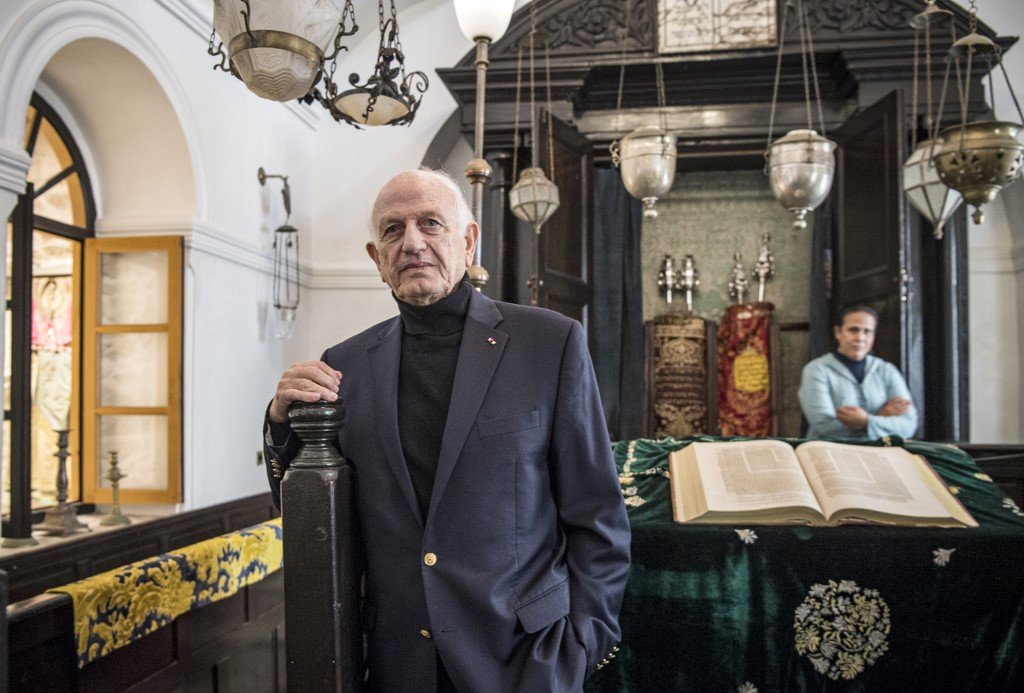
- ARAB NEWS
- 05 Jul 2025

For 70 years, the Israeli-Palestinian problem has remained open, like a festering wound, prohibiting a lasting peace in the wider region from ever taking hold. In the fallout from US President Donald Trump’s “Peace to Prosperity” proposal to resolve the issue, a parallel story of cultural and religious coexistence could not be more incongruous.
However, in Morocco, the oldest Arab Kingdom, coexistence was given a glimmer of hope last month with the opening of the Bayt Dakira, a spiritual and heritage space that seeks to preserve and enhance the Judeo-Moroccan memory in the old city of Essaouira. The museum is the latest in a long line of efforts to restore and redefine North Africa’s Jewish roots.
The tale of Al-Yahud Al-Maghariba (the Moroccan Jews) is not one that is often told. At their peak in the 1940s, they made up about 5 percent of the country’s population and were critical to Morocco’s financial instructions, trading businesses and guilds of craftsmen.
After the creation of the state of Israel, the community dispersed, some owing to panic and others to “Operation Yachin,” a policy to encourage the migration of Jews from Morocco to Israel. But, as the stories of Libyan, Iraqi, Yemeni and Syrian Jews have been lost amid the conflicts of the Middle East, the Jews of Morocco are not just surviving, but thriving in a country they have called home for thousands of years.
To the Moroccan authorities, the country’s Jewish community is a living symbol of its persistence as a religious sanctuary. For many centuries, the country’s sovereigns have issued “dahir” decrees, according protection to communities and freedom of worship. In every Moroccan city, the “mellah” (Jewish quarter) is almost an annex of the sultan’s palace, reflective of the symbiotic relationship between the country’s primary executive and religious power and its Jewish business community. It was, therefore, only fitting that King Mohammed himself opened the Bayt Dakira, echoing the policy of his grandfather and namesake, who rejected Nazi orders to deport the country’s Jewish community. “There are no Jews in Morocco; there are only Moroccan citizens,” was his response to the Vichy government of France’s request to turn over Jews. He added: “I reiterate as I did in the past that the Jews are under my protection, and I reject any distinction that should be made among my people.” While other rulers made common cause with the Nazis, Mohammed V, as “Commander of the Faithful,” exercised his authority in the protection of not only Muslims, but all of his Jewish and Christian subjects too. During the course of the Second World War, not a single Moroccan Jew was handed over to the Nazi authorities.
The Bayt Dakira is part of a wider effort to restore the country’s Jewish legacy. This has included the renovation of a dozen synagogues, 167 Jewish cemeteries and 12,600 graves in recognition of the importance of Morocco’s Jewish heritage. In an era when issues in the Holy Land have massively skewed the narrative of the Jewish role and contribution to Muslim societies, the case of Morocco is incredibly important. Some of the most prominent political, academic and cultural figures to originate from the Arab world in the last few centuries have been Maghrebi Jews, including US Supreme Court justices, Nobel Prize laureates, French Prime Minister Pierre Mendes France, and his British counterpart Benjamin Disraeli.
During the course of the Second World War, not a single Moroccan Jew was handed over to the Nazi authorities.
Zaid M. Belbagi
Arab education ministries would often balk at how Morocco’s religious academy includes Judaism in its curriculum, even teaching future imams about the six orders of the Mishnah. However, in reality, adopting such a mindset actually improves cross-cultural understanding and reduces the tensions to which the region has become accustomed. To Andre Azoulay — the current king’s trusted adviser, who is touted as the most powerful Jew in the Muslim world — projects such as Bayt Dakira are as much about correcting stereotypes and misconceptions as they are about preserving heritage. Speaking at the opening, he stated that in rejecting “amnesia, regression and archaism,” what was once the region’s only Jewish-majority city can now stand as an example of the diversity and cultural richness of living together.
Though the work of the Haim and Celia Zafrani International Research Center on the history of the relations between Judaism and Islam, and Azoulay’s Essaouira-Mogador Association, may seem parochial, it echoes far beyond the Atlas Mountains that shelter Essaouira. As Abu Dhabi moves toward building its first synagogue as part of the Abrahamic Family House project, it will be intriguing to see whether — among the conflict and the ill will — other Arab countries will seek to explore their Hebraic heritage.